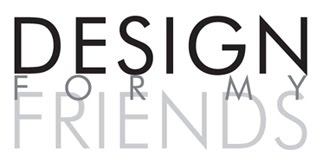There are a few ways you can go when choosing a paint color. Psychology plays a major role in the selection. You'll want to decide on the kind of atmosphere you are creating. For example, if you want a bedroom that feels restful and peaceful, don't paint it a loud, bright color. Choose something soft that will drift you off to sleep. If you want your living room to be lively and fun, you can choose a color that is bright and dynamic.
- bright, bold colors - These are great in more public spaces (living room, kitchen, dining room) and add excitement and fun to the room.
- cool neutrals - A cool neutral would be something like a gray. "Cool" colors have blue in them. Think moonlight. Grays look elegant and sophisticated and can be used in a wide array of applications.
- warm neutrals - A warm neutral is something like a beige. "Warm" colors have red in them. Think sunlight. Warm neutrals are probably the most common and safest paint color. They work with almost any furniture, are soothing, and look great.
- soft pastels - A soft pastel is a neutral version of any color (hue). They are created by adding white (and maybe a touch of gray) to any hue. Soft pastels could really go anywhere too. They would work in a bedroom, are great for bathrooms, and even in a living room. It's kind of a wild card.
As far as choosing color schemes, here are a few basic principles: You can pair complimentary colors (colors opposite each other in the
color wheel). You can pair adjacent colors (colors that are next to each other on the
color wheel). You can do a scheme of a color + its tints. Don't worry, I will do posts on specific scheme suggestions. For more about basic color theory, click
here.
Summary of Key Terms:
Tint: a color plus white - lighter
Shade: a color plus black - darker
Warm: a color with red in it - sunshine
Cool: a color with blue in it - moonlight
Hue: the true color (it's a synonym for color, like green, blue, etc.)
Complimentary - colors that are opposite each other on the
color wheel. examples: orange + blue, yellow + violet, red + green
Adjacent - colors that are next to each other on the color wheel - examples: red + orange, yellow + green, blue + violet
When choosing a paint color, be sure it works with everything in the room. To properly view paint chips, hold them vertically, the way they would be on the wall. Many people make the mistake of looking down on them, and this is not the correct way to do it. Look at it next to your furniture, flooring material, fabrics, etc. If it goes with everything in the room, the next step is to paint a test swatch on the wall. Benjamin Moore offers small bottles of paint you can buy to make a 2'x2' swatch on the wall. Let it dry, look at it in all lighting conditions, and decide if you want to go for it. If there is a paint (or paint scheme) you are thinking of using, email me and I can provide feedback.



















































